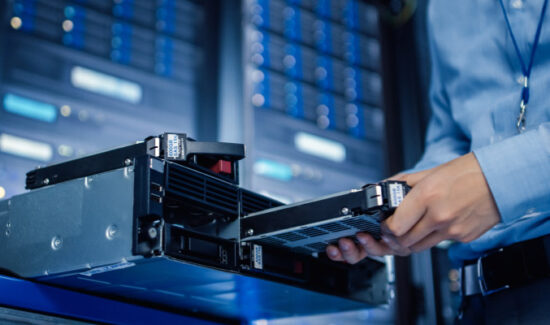Understanding the Power of Digital Twins


Qumulo’s Ryan Farris offers insights into understanding the power of digital twins. This article originally appeared on Solutions Review’s Insight Jam, an enterprise IT community enabling the human conversation on AI.
In the 1982 science fiction film Tron, wary IT professionals had to worry about getting snatched up by an all-powerful artificial intelligence and inserted into a virtual, computer-generated world. More than four decades later, the risk of finding oneself suddenly virtualized remains thankfully low. When it comes to physical objects and systems, however, that sort of physical-to-virtual transformation is now a practical reality. In fact, organizations rely on such technology every day to monitor industrial assets, predict the behavior of complex systems, and perform thousands of other business-critical tasks around the globe. Welcome to the sci-fi future of Digital Twins.
Digital Twins use realistic representations of physical objects to help businesses better understand the behavior of real-world assets, systems, and processes. By collecting vast amounts of real-world data, often in real-time, organizations can model the behavior of industrial machines to study the precise conditions under which they’re likely to fail. They can simulate physical assets like wind turbines and aircraft engines to identify minute inefficiencies. They can analyze complex systems to identify opportunities to lower costs, improve quality, and proactively prevent problems.
Still sounds like science fiction? In the last few years, organizations in manufacturing, energy, healthcare, government, and many other sectors have been incorporating digital twins into their day-to-day operations. Analysts estimate the current global market at $US19 billion and project it will reach nearly $92 billion by 2028—a compound annual growth rate (CAGR) of 36.9 percent.
Why are Digital Twins seeing such explosive growth? And what should you know if you plan to take advantage of them? Let’s take a closer look.
Understanding Digital Twins
Fundamentally, a Digital Twin is a virtual replica of a physical object or system that’s designed to mirror its real-world counterpart as closely as possible. Digital Twins typically start with a conceptual model, such as one generated from computer-assisted design (CAD), building information modeling (BIM), or geographic information system (GIS) tools. Rather than staying static, however, this model continually evolves as organizations collect data about their physical counterparts from sensors, real-time data streams, or any other data source. They can then apply insights gleaned from the Digital Twin back to the physical world in a continuous feedback loop—such as recalibrating robots on an assembly line to improve quality or rerouting traffic in a Smart City.
This may sound revolutionary, but the basic idea of digital twins has been around for decades, beginning life as a physical, analog twin. Most famously, during the Apollo 13 mission in 1970. NASA used this approach to simulate the conditions of the damaged spacecraft and troubleshoot strategies to safely bring astronauts home. Later, mainframe computers used digital twin systems to monitor power plants, dams, and other large facilities. As technologies like CAD simulation and 3D parametric modeling have advanced with modern computing, digital twins have evolved alongside them.
With the growth of Internet of Things (IoT) sensors and connected devices, plus new tools to analyze vast amounts of information, organizations are now applying digital twins to an ever-growing set of use cases. Today, as businesses pair digital twins with sophisticated machine learning algorithms and AI, they can analyze even more data more quickly. And they’re finding new ways to use these insights every day, from developing more accurate predictive analytics to applying data-driven decision-making to more aspects of the business.
Transforming Operations
As Digital Twins evolve, organizations in every industry are realizing just how valuable they can be. Businesses can use these tools to:
Capture & Analyze More Information
Digital Twins and the sensors and data sources supporting them can dramatically accelerate data acquisition. Designers, engineers, and business analysts can capture previously unimaginable amounts of structured and unstructured data (such as video surveillance and satellite imagery) and analyze it at incredible speeds to better understand their real-world business.
Make Smarter Decisions
Digital Twins (especially paired with AI/ML) allow companies to identify hidden trends, inefficiencies, and other patterns in physical systems that might never be uncovered otherwise. Businesses can explore more hypotheticals, make more accurate predictions, and apply more real-world data to a wider range of questions—from optimizing designs and maintenance schedules to responding to supply chain disruptions.
Optimize Systems in Real-Time
The ability to visualize and interact with real data from the physical world—without having to tamper with actual physical assets—enables more sophisticated collaboration and decision-making. With realistic Digital Twins, organizations can capture more data and apply new insights back to real-world operations as quickly as they’re identified.
Consider one example of digital twins in action: Hexagon. A $4.3 billion global leader in digital reality solutions, Hexagon captures high-resolution images of environments and infrastructure from around the world for its Digital Twins. The company then provides access to this wealth of geospatial data to help private- and public-sector customers (from federal agencies to construction firms) conduct sophisticated simulations and analyses. Hexagon’s customers can use these insights to optimize internal processes, identify inefficiencies, and gain an edge over the competition. During COVID-19, for instance, the U.S. Federal Emergency Management Agency (FEMA) used Hexagon Digital Twin data to determine optimal locations for testing sites and mobile clinics.
Bringing Digital Twins to Life
Digital Twins can provide powerful tools for data-driven business transformation. To take advantage of them, however, you’ll need to have the right technology foundation in place—starting with agile, high-performing storage. Companies making the most of Digital Twins store and manage truly incredible amounts of structured and unstructured data. Hexagon, for example, has processed more than 27 million square miles of global data over the last eight years, and its customers consume more than 1 billion high-resolution images per month.
To use Digital Twins in your organization (or support other businesses relying on them), you likely will need to manage terabytes of data daily and be able to quickly process and distribute it. And that’s just today; the future holds only more connected devices, more sensors, and more urgent demand for higher resolutions and faster processing cycles. Make sure you’re using data storage and management solutions that are as flexible and dynamic as possible, so you can adapt them to changing needs and use cases.
Beyond raw capacity and speed, you’ll also need intelligent data management strategies to ensure consistently high data quality. The good news is that, as this is a key characteristic of modern data architectures, many storage platforms are already capable of continually improving data quality through state-of-the-art monitoring, analysis, and data optimization.
Looking Ahead
Digital Twins may still seem like science fiction, but they’re a very real, increasingly common tool for modern business. And if you’re not taking them seriously, you should be. The ability to create lifelike virtual replicas of reality, and apply lessons learned from them in real-time, creates a significant competitive advantage. Just make sure you’re making sound decisions about storage and data management strategy. The more information you can capture, the more realistic the digital twin—and the more valuable the insights it reveals. It’s one more example that the right data, at the right scale, can make a huge business impact.


















